Top 5 frequently-asked-questions about speed cushions!
Do you want to know more about what a speed cushion is? Speed cushion is asphalt, concrete, steel, rubber, or plastic-made, mounded traffic calming equipment that is slightly raised from the surface of city streets and driveways. They help reduce the speed of coming traffic to a safe point.
These road bumps are installed using traffic engineering techniques in slow zone areas where the vehicle is at risk of hitting a pedestrian. They are very effective compared to speed humps and tables as they have wheel cuts for emergency vehicles to pass easily without affecting their speed.
Given below are the 5 FAQs speed cushions users often ask about.
Do you want to know more about this topic? We also have an article talking about what is a speed cushion.
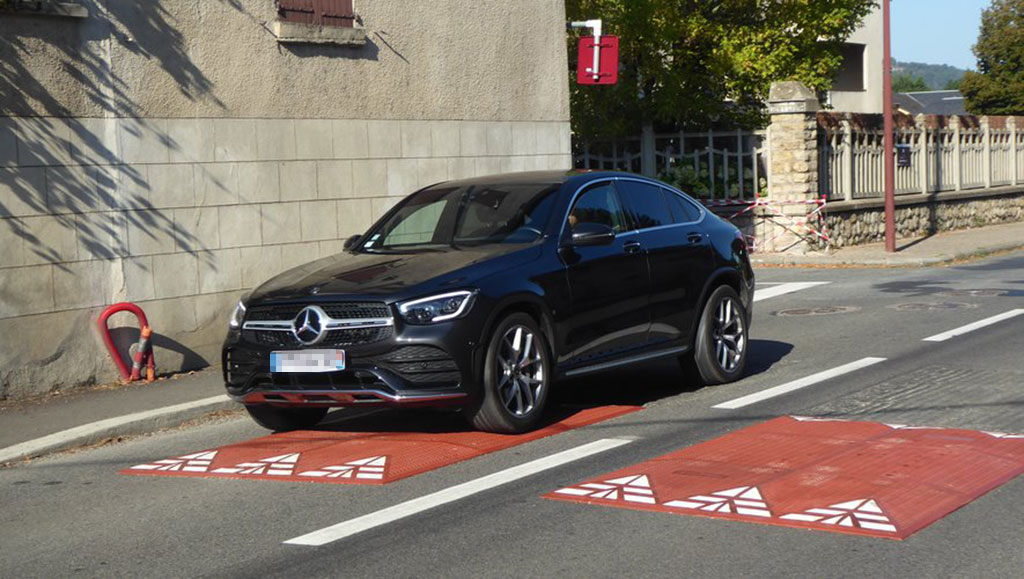
1. What is a speed cushion?
Speed cushion is a traffic management device that controls speeding vehicles in high traffic volumes. The transportation department uses them as traffic calming measures to control traffic like other traffic control devices such as traffic cones, speed humps, traffic signs, rumble strips, stop signs, speed breakers, speed limits, traffic signals and speed signs etc.
The left-out gaps between the speed cushions allow emergency vehicles such as ambulances, buses and fire trucks to pass easily through this pavement. But they force the other vehicles to reduce their speed to a safe limit.
Speed cushions have black, white, or yellow lines visible to the vehicle from a distance. The pavement markings of the cushions inform the drivers about their presence. This way, they can control the speed of their vehicle before coming in contact with the speed cushion.
Sometimes, the drivers don’t notice the speed cushion on the road. In that case, they experience a sudden jerk or jolt due to the wheels hitting the speed cushion. But these traffic calming tools do not cause any harm to the car.
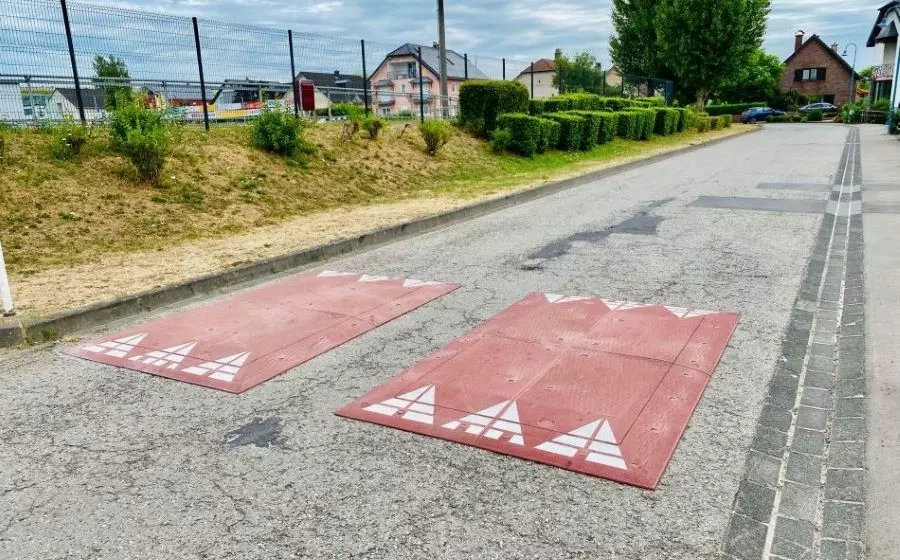
2. How are they different from speed tables and speed humps?
A speed cushion is used for the same purpose as a speed table and a speed hump; therefore, they are often confused. However, they are all different devices for traffic control.
A speed cushion is a slightly raised bump from the road’s surface that controls traffic flow on an urban roadway. These spaced bumps in the street, known as wheel cuts, facilitate vehicles with greater axles to cross easily without being affected by their presence.
However, the rest of the vehicles must slow down at a safe speed limit of about 25 miles per hour. The gaps also help drainage of excess water from roads and streets. Cyclists and motorists travelling can easily cross the reflective device to calm traffic.
Comparatively, speed humps and speed tables have a continuous span that reduces the speed of all vehicles to a safe limit. This continuity at each curb becomes a disadvantage for emergency vehicles in critical situations.

3. Are speed cushions effective?
Yes, speed cushions are very effective in reducing the speed of vehicles. They are one of the best traffic calming techniques to control traffic in areas with a greater chance of vehicles hitting pedestrians or other vehicles. The speed cushions have gaps between the bumps, allowing emergency vehicles to pass easily.
They are of a very low height, forcing vehicles with small axle sizes to minimize their speed at a safe limit. This characteristic helps in reducing the road collision ratio in high-traffic areas. Their effectiveness is highly dependent on the place where they are being installed and the material they are made up of.
Emergency vehicles are not very wide in some countries, and their size is nearly equal to personal cars and other vehicles. They are designed to be used on narrow streets and roads. In those countries, installing speed cushions for controlling traffic might be ineffective as they cannot easily pass through the wheel cuts because of their small size.
However, studies show that even in those geographical locations, they have helped reduce the risk of vehicle crashes to a great extent. These speed cushions are very effective in other countries where emergency vehicles are wider.
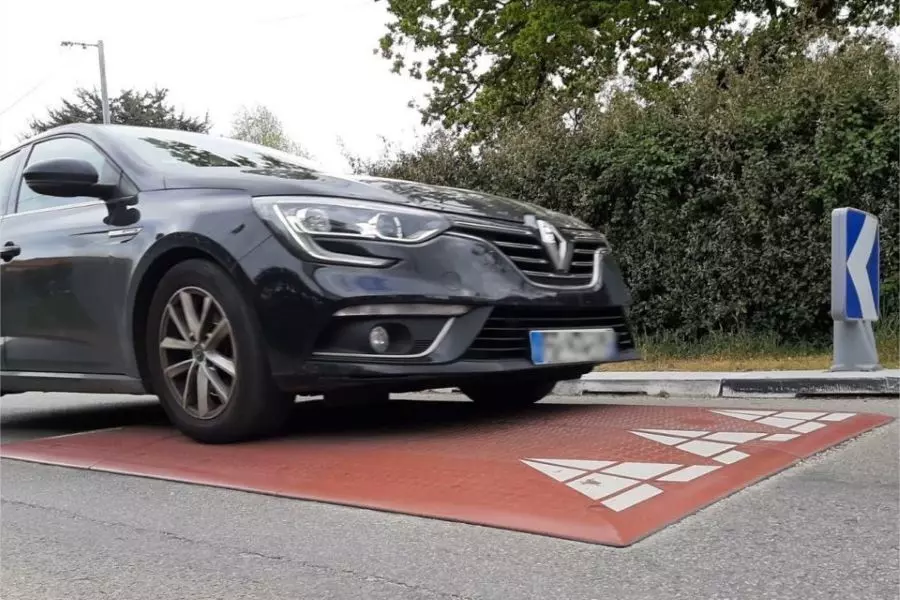
You have already read a good part of this article, 👀
We've
got the impression that you like it. 🙂
👇🏻
IF YOU ARE LOOKING TO WORK DIRECTLY WITH A MANUFACTURER,
FEEL FREE TO CONTACT US. WE ARE VERY HAPPY TO HELP!
4. How are speed cushions better than speed humps?
Although both a speed cushion and a speed hump serve the same purpose, i-e, reducing the speed limit of vehicles at a safe point, a speed cushion is better than the speed hump because of its smart design.
They have gaps that allow vehicles with greater axle width to pass over them easily. This means that ambulances, buses and fire trucks can easily cross them without wasting time during critical times when every second is important. But cars and other personal and smaller vehicles must slow down to 25 mph.
Speed cushions are made up of reflective material visible from a long distance. This alerts the driver in advance about a speed breaker ahead. The driver can easily reduce the speed to a safer and slower point.
Another advantage of a speed cushion is that cycles and motorbikes can easily cross it through the wheel pavements. The gaps also help drainage of the streets and roads during the rainy season. But in the case of speed humps, there is no left-out space for the wheels of large vehicles. Hence, it becomes an obstacle for emergency vehicles.
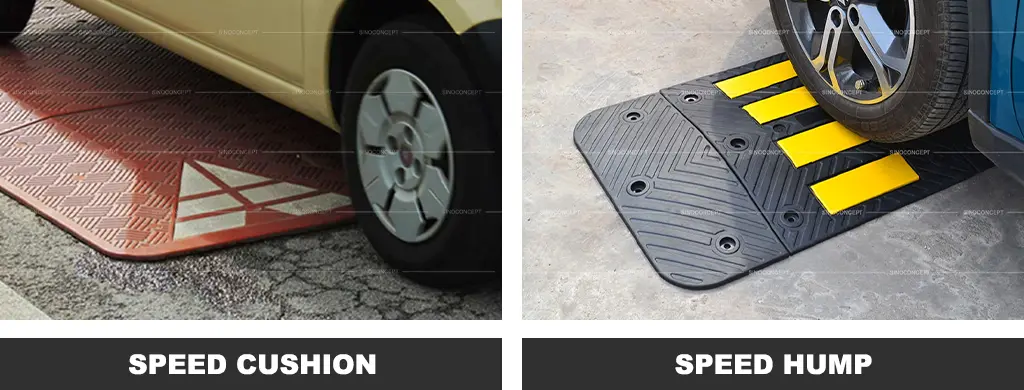
5. What is their installation cost, and why are they becoming common?
The cost of installing speed cushions depends highly on the road where you want to place them. Its price also varies depending on the material used for manufacturing, such as recycled plastic or rubber.
Speed cushions are one of the most effective traffic calming measures like red light signals, traffic signals, traffic cones, stop-sign and speed humps that transportation engineers strategically install to slow traffic in urban areas such as a sidewalk, roundabouts, ramps, cut-through, crosswalks, pedestrian crossing, public-works, street parking for pedestrian safety and traffic safety.
Its placement cost ranges from low to high, depending on the width of the pathway. It will be much higher for broader roads than for narrower ones. But one benefit of installing a speed cushion as a speed breaker is that it can be reinstalled easily at another place after removing it.
Speed is the most common reason for residential and urban road accidents. City management is very much concerned about the safety of its residents.
Therefore, they are installing speed cushions on roads to avoid any unfortunate events occurring at roundabouts, road Intersections, cut-throughs, ramps, crosswalks, crossings, parking lots, double lanes, etc.
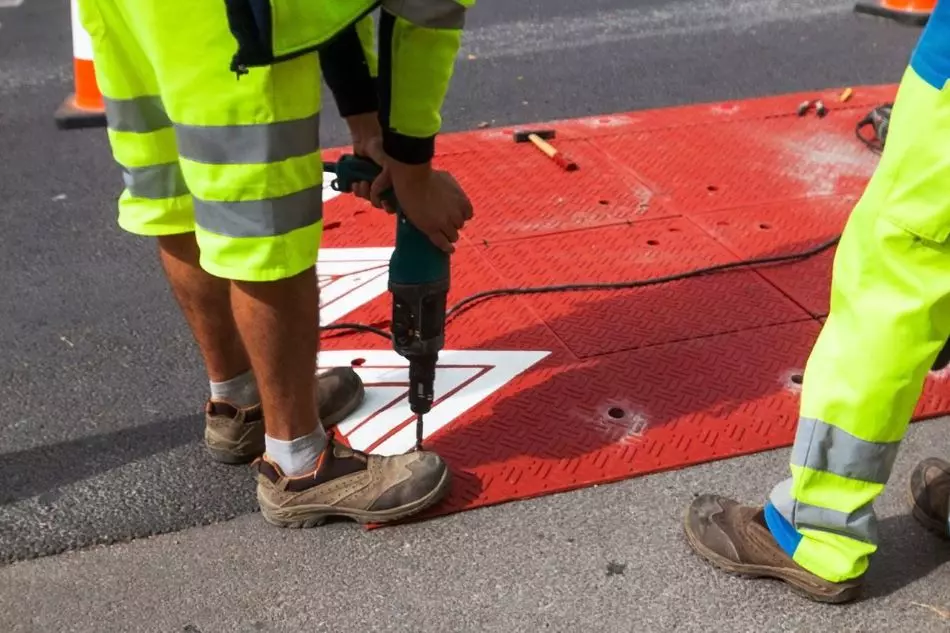
Conclusion
Speed cushions are road bumps from the road’s surface at a little height. They slow down the speed of the incoming traffic to lower the risk of traffic hazards that may happen near high pedestrian traffic places such as schools, crosswalks, hospitals, etc.
They have wheel cuts that allow emergency vehicles such as ambulances and fire trucks to pass quickly but force other vehicles to reduce their speed to some extent.
Speed cushions vary depending on the location of their instalment and the material used to manufacture them. You can select one based on your requirements.
👇🏻
IF YOU ARE LOOKING TO WORK DIRECTLY WITH A MANUFACTURER,
FEEL FREE TO CONTACT US. WE ARE VERY HAPPY TO HELP!





















